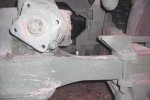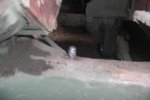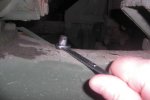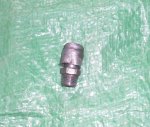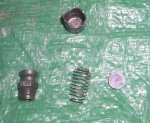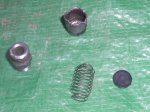3rdmdqm
Active member
- 430
- 102
- 43
- Location
- Woodbine Maryland
Here are some pics for those wondering what makes up the axle vent. After what appeared to be an axle seal leak, I took mine off to clean. Fixed the leak for a while but leak is back. Took the vent off again and there is pressure building up as you could hear the pssst when I removed it. Cleaned out the vent and replaced. Let sit 24 hours, took vent out again and heard pssst again, meaning that the heat from the day created pressure just sitting still and not driving it. I guess only way to ensure no pressure is to get rid of the rubber seal and spring and run hose up to the frame open with a filter on the end that is free flowing and doesn't hold any pressure. The spring and rubber seal holds some pressure no matter what until the pressure builds enough to force up the seal against the spring. Don't know how much pressure it takes to start forcing the gear oil out of the seals. Of course next step now is axle seal replacement in addition to the vent modification.
To remove axle vent, use a 7/16" wrench. You can remove the top of the vent by holding vent where wrench goes (do not touch threads) in a vice or with channel locks and use a small flathead screwdriver to carefully pry off the top which is secured by small crimps.
To remove axle vent, use a 7/16" wrench. You can remove the top of the vent by holding vent where wrench goes (do not touch threads) in a vice or with channel locks and use a small flathead screwdriver to carefully pry off the top which is secured by small crimps.
Attachments
-
37.1 KB Views: 187
-
22.7 KB Views: 177
-
24.9 KB Views: 185
-
48.8 KB Views: 193
-
46.2 KB Views: 190
-
58.7 KB Views: 189
-
51.4 KB Views: 189



